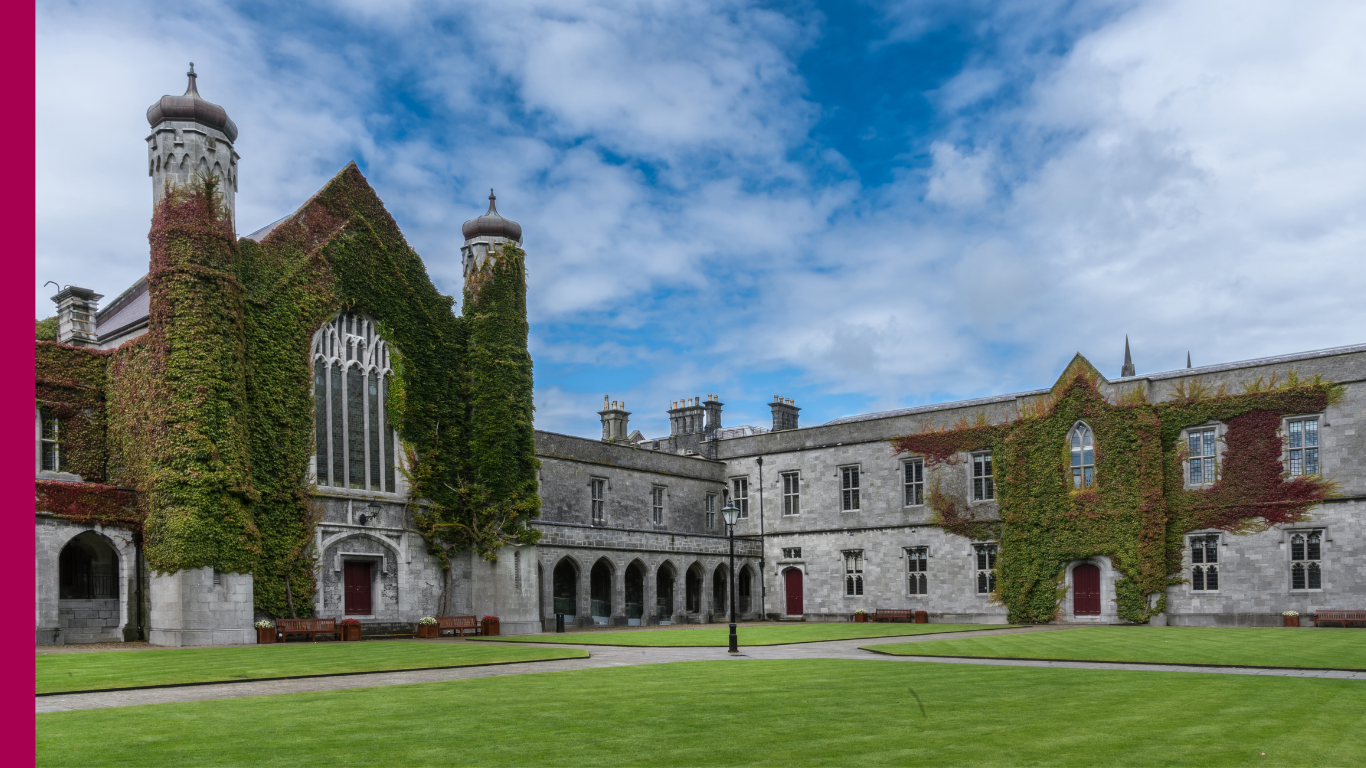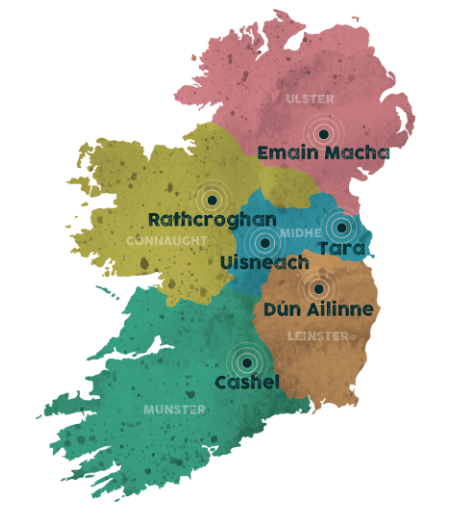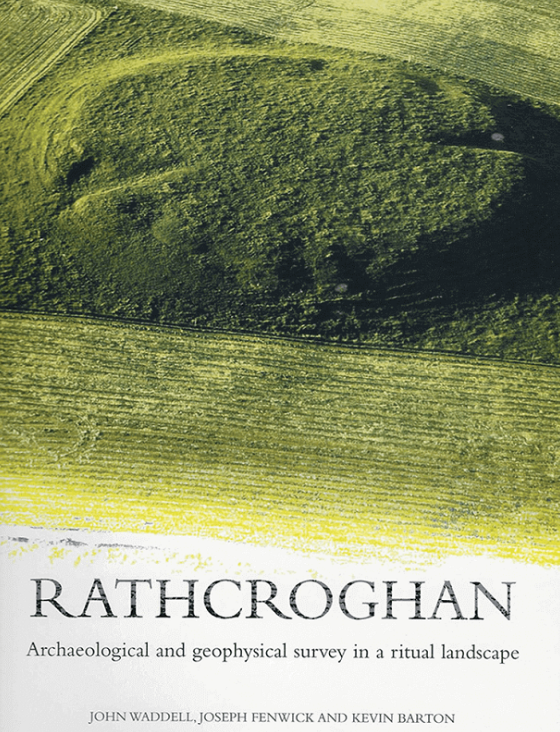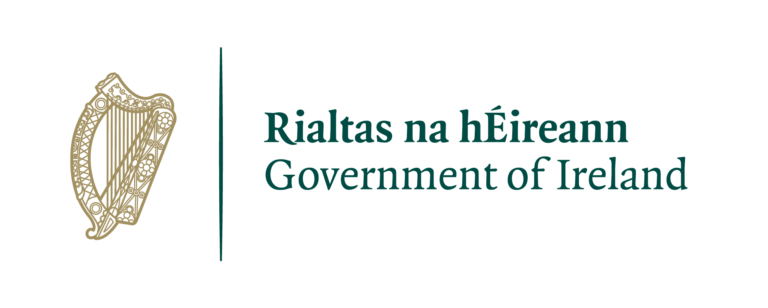Reaping the rewards of living and farming at Rathcroghan, a culturally sensitive landscape in central Connacht.
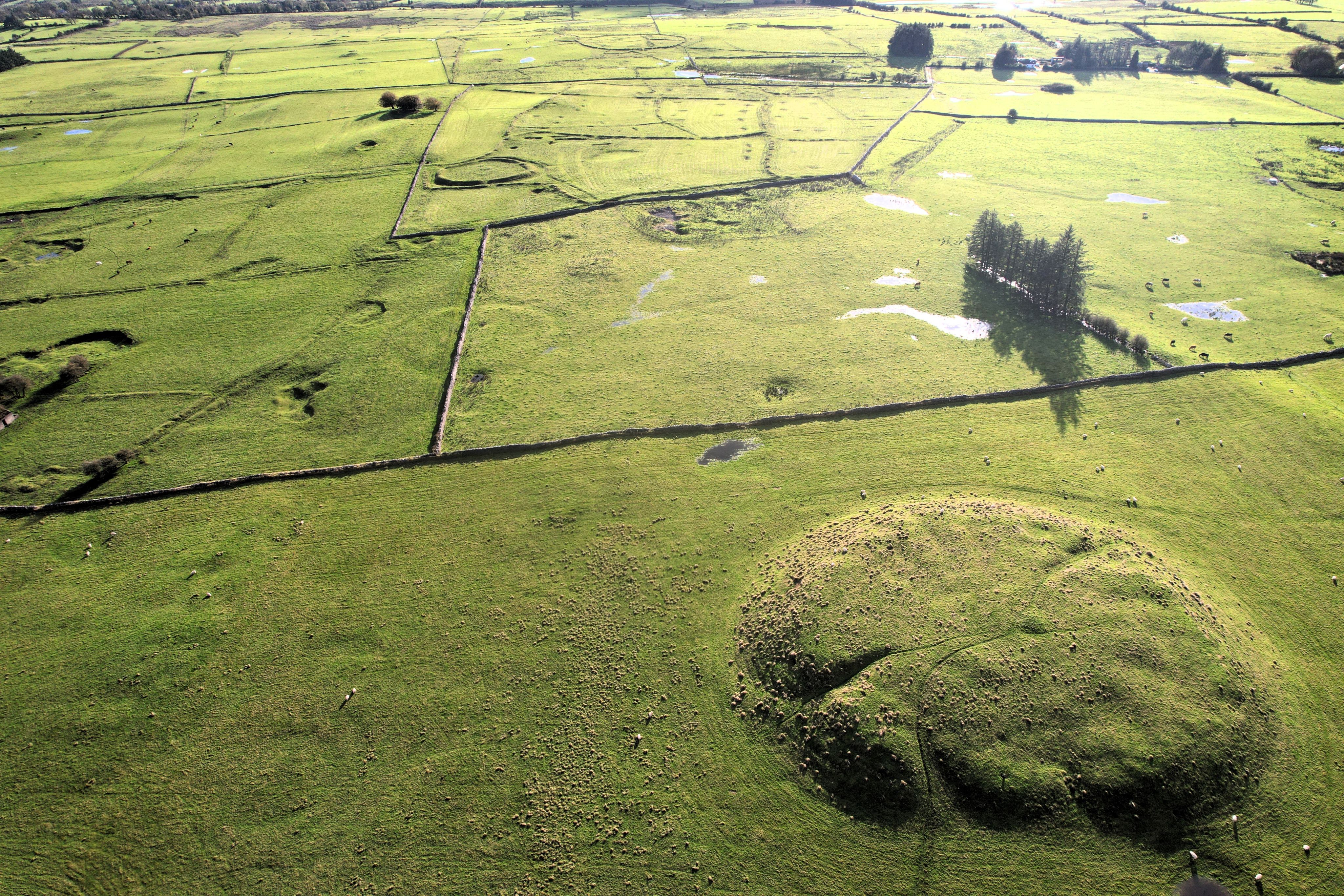
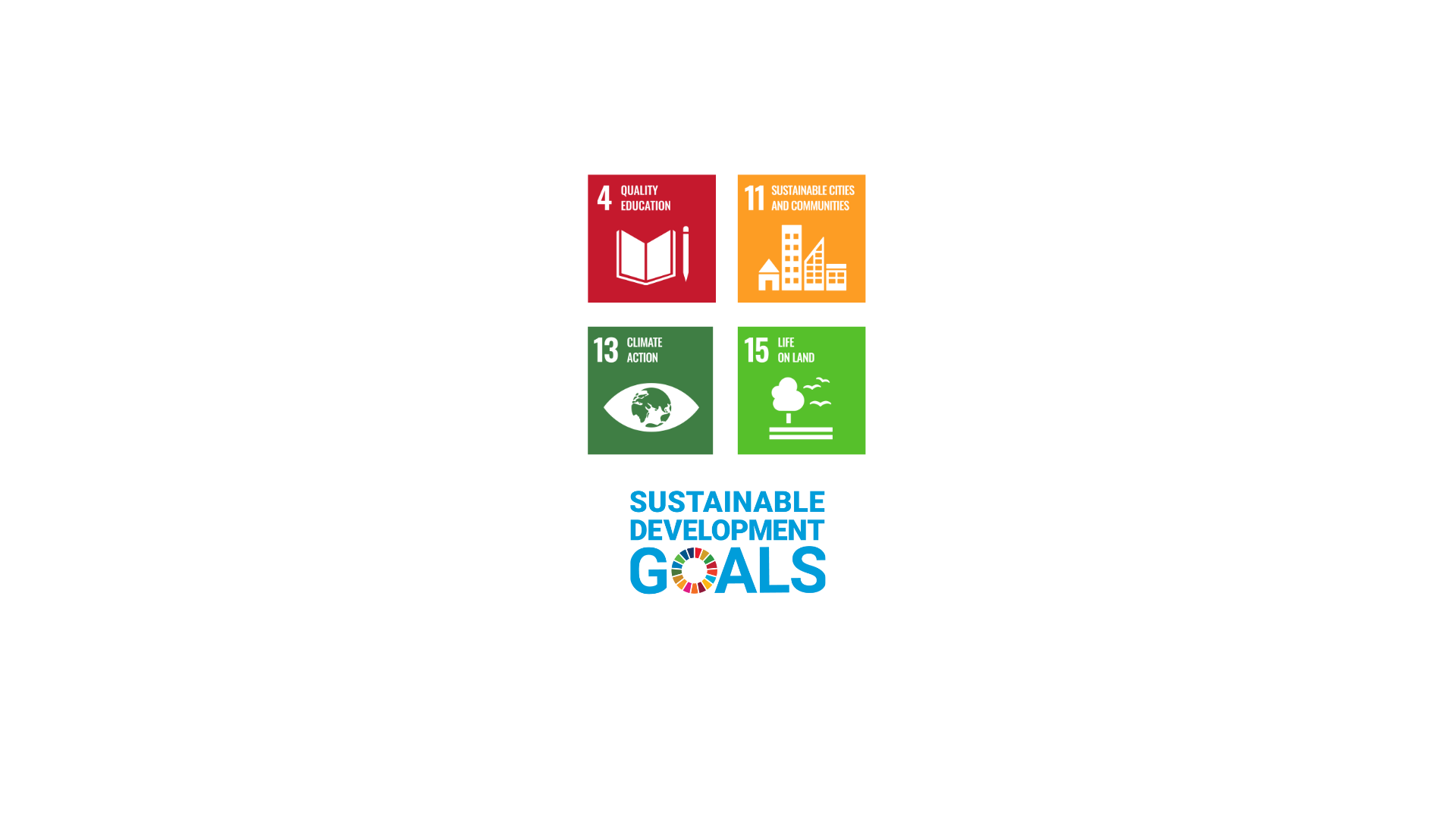
SUMMARY
Over the millennia, from prehistoric times to the early historic era, Rathcroghan was one of the pre-eminent ‘royal’ sites of Ireland. With the coming of Christianity, it was abandoned, its great timber buildings and monumental earthworks decaying into obscurity. Archaeological research at the University of Galway, spanning the last 30 years, has rediscovered this ancient ritual landscape. This is now showcased in the Rathcroghan Visitor Centre (11+ employees and 26,500 visitors in 2023) and has also prompted a programme of EU-funded heritage conservation through innovative, sustainable and climate-neutral farming practices (€1.9 million to ‘Farming Rathcroghan’); a template for other communities to replicate. Stimulating economic regeneration, tourism, and the development of community amenities of this disadvantaged rural environment (€495,000 for enhanced access to heritage sites), these initiatives have fostered a sense of stewardship, pride, and belonging in the local community, as well as forging long-term relationships between University of Galway and the people of County Roscommon. Over its duration, the project has also promoted environmentally sustainable farming in support of government policy towards achieving a climate-neutral economy.
Royal Sites of Ireland
Royal Sites of Ireland
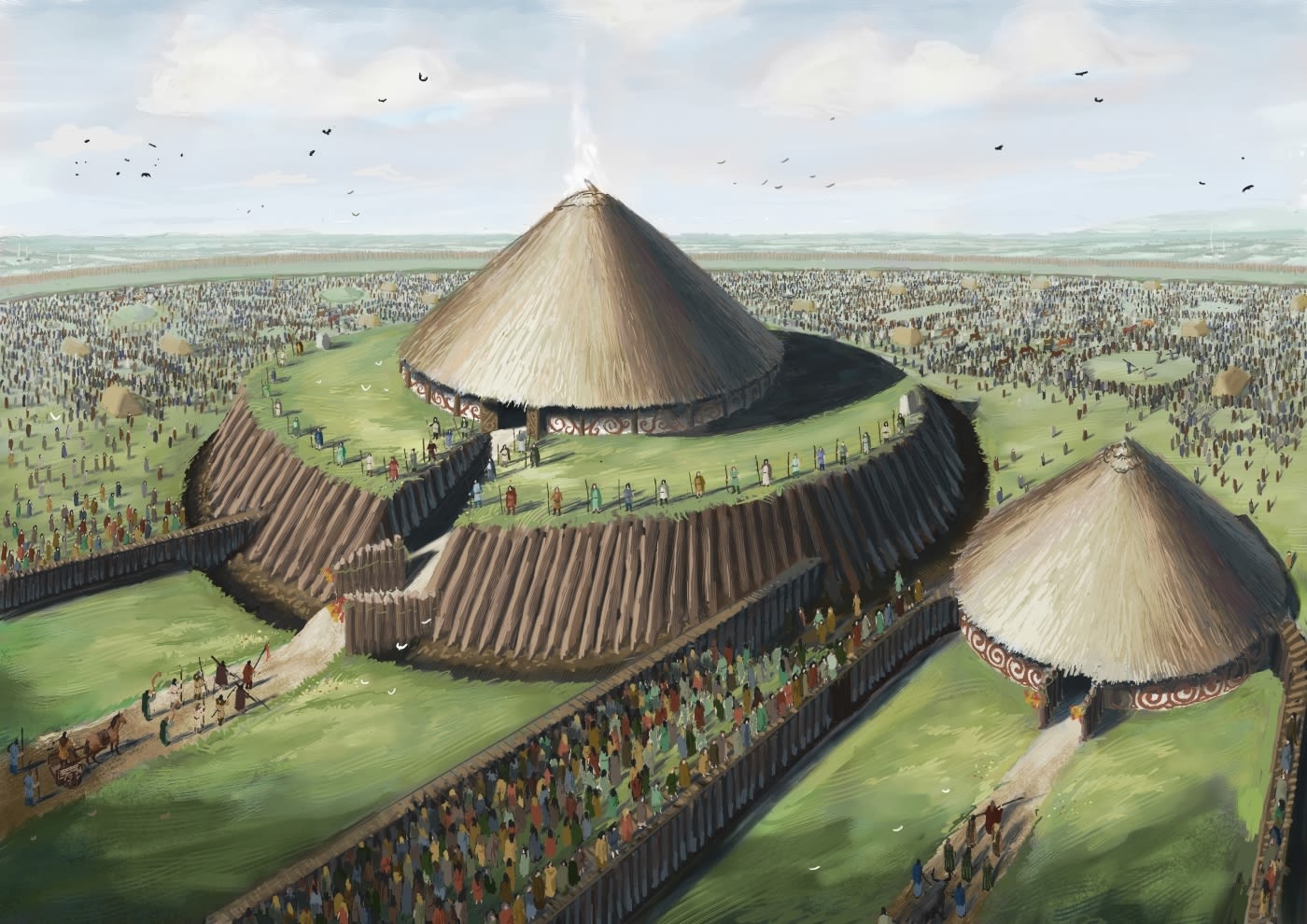
A conjectural reimagining of Rathcroghan Mound and surrounding circular ritual sanctuary as it might have appeared during the Iron Age, about 2000 years ago.
Research Description
Rathcroghan (ancient Cruáchu) is one of a small number of late prehistoric ‘royal’ sites in Ireland that feature prominently in early medieval literature, lore and legend. It was from here, for instance, according to the legendary Irish epic, Táin Bó Cuailnge (The cattle raid of Cooley), that Queen Medb conspired with her husband Ailill to lead an army into Ulster in a quest to seize by force the prized brown bull of Cooley. This convergence of archaeology and legend first inspired, and has subsequently sustained, this long-term project of archaeology and related studies at the University of Galway, which now encompass not only late prehistoric Rathcroghan, but also the surrounding archaeological landscapes up to the later medieval period.
‘Reaping the Rewards’ encompasses a series of inter-linked and cumulative research projects, which began in the 1980s and continues to the present day. The ArchaeoGeophysial Imaging Project, an interdisciplinary enterprise between the Discipline of Archaeology and Earth and Ocean Sciences, University of Galway, was launched in 1994 with funding awarded through The Heritage Council under the direction of Professor John Waddell (now emeritus). Using non-invasive archaeological and geophysical survey techniques, the project sought to map both surface and sub-surface archaeological features at a number of selected archaeological monuments in the area. This research and subsequent fieldwork by John Waddell, Joe Fenwick (Technical Officer, Archaeology) and University of Galway postgraduate and research students, revealed the hidden complexity and remarkable scale of the Rathcroghan ritual landscape, comprising of some 240 monuments spread over an area of nine square kilometres. These range from burial mounds, barrows and enclosures, to pillar-stones, avenues and sub-terranean passageways. A focal monumental complex encircling Rathcroghan Mound lies at its heart. Here, the sub-surface remains of a vast pagan sanctuary and temple complex were revealed though detailed geophysical, topographical and aerial surveys.
Rathcroghan Mound, Co Roscommon. Credits: Joe Fenwick, University of Galway
Rathcroghan Mound, Co Roscommon. Credits: Joe Fenwick, University of Galway
The unfolding results of all these investigations were published as a monograph in 2009; in addition to eleven scholarly articles, five book chapters, five field reports, and a heritage guide, up to the present. The research has also been the subject of numerous newspaper articles, radio and television news items and various documentaries over the years. The fieldwork discoveries also feature among the exhibits of the Rathcroghan Visitor Centre, which was built to showcase the remarkable results of this research and the rich archaeological, early literary and cultural heritage of the surrounding area.
Advancing this work, both spatially and temporally to include the later medieval period, a wider-ranging interdisciplinary archaeological, historical and early literary research programme, The Connacht Project, was launched in 2011. This project is expanding our understanding of the development of society and the landscape of the wider province, with Rathcroghan, its ancient capital, at its core. Dr. Kieran O’Conor has led the archaeological component of this project which has resulted in multiple studies and publications (three books, four scholarly articles, four book chapters, three visitor guides, and multiple information boards in the field) concerning a variety of sites where myth, history, literature and archaeology converge. These studies include fieldwork at the royal residence of Cloonfree, research into Moygara Castle and the Rindoon deserted medieval town, and a comprehensive study of the work of the 18th century Connacht antiquarian and scholar Charles O’Conor.
All this archaeological research has led directly to a number of local initiatives designed to promote the cultural heritage of Rathcroghan, provide additional amenities and attract visitors, students and tourists to the greater ‘Hidden Heartlands’ region. The Farming Rathcroghan Project also came about as a direct result of the archaeological research and plays an active role in implementing best farming practice and policy in relation to the protection and conservation of archaeological landscapes. In addition to employment, these initiatives have engendered a sense of collective purpose, pride and belonging in the greater Rathcroghan community over the years.
Rathcroghan: archaeological and geophysical survey in a ritual landscape by John Waddell, Joseph Fenwick and Kevin Barton.
Rathcroghan: archaeological and geophysical survey in a ritual landscape by John Waddell, Joseph Fenwick and Kevin Barton.
Details of the Impact
The significance of the archaeological discoveries at Rathcroghan were immediately apparent to the wider scientific world and the local community were also quick to exploit its potential benefits. The Tulsk Action Group was established in 1996 with the objective of building a Rathcroghan Visitor Centre. Opened by Mary Harney TD in 1999, the Centre has gone from strength-to-strength. Its manager, Dr Daniel Curley (PhD Archaeology, University of Galway) currently employs eleven people, with additional staff engaged during the summer months. It includes an extensive exhibition area, artefact displays, a restaurant, bookshop and research room. There were over 26,500 visitors to the Centre in 2023, a significant boon to the local economy and a major attraction of Fáilte Ireland’s ‘Hidden Heartlands’.
Rathcroghan Visitor Centre, Bringing Ireland’s Past and Legends to Life.
The Discipline of Archaeology actively engages with the Visitor Centre, contributing to its annual conference and Heritage Week initiatives, and its facilities are also used for education and training purposes. In 2024, for example, BA students attended a day-long Rathcroghan field-class as part of their ‘Recording Monuments in the Landscape’ module. A week-long Rathcroghan field school was also held for Archaeology and Geography postgraduates undertaking the ‘Landscape, Archaeology & Heritage’ and ‘Rural Futures Planning and Innovation’ MA programmes respectively.
‘Farming Rathcroghan: sustainable farming in the Rathcroghan archaeological Landscape’, a European Innovation Partnership (EIP) project funded through the Department of Agriculture, Food & the Marine, is a joint initiative of the Rathcroghan Visitor Centre, the Discipline of Archaeology, Roscommon County Council, National Monuments Service (Department of Housing, Local Government & Heritage), Rathcroghan landowners and other key farming and heritage stakeholders including the Office of Public Works, The Department of Agriculture, Food and the Marine, Teagasc, Fáilte Ireland, The Heritage Council and Roscommon Leader Partnership. The project was awarded €984,000 in 2018 for a five-year programme to devise and implement novel, environmentally sustainable farming innovations to protect and conserve the archaeological heritage. Its brief also addresses environmental concerns, the maintenance of ground-water quality, carbon sequestration, and other actions in support of government policy towards achieving a climate-neutral economy.
"The role of the School of Geography, Archaeology & Irish Studies, University of Galway in shaping and influencing the success of the Farming Rathcroghan EIP is attributed to its dynamic and proactive partnership contribution to our Operational Advisory Group and in providing the project with essential academic knowledge, based on its extensive field research in the support and delivery of real benefits to the local community and beyond.”
The Project employs a Manager, an Administrator, and an Archaeological Advisor, along with a voluntary Operational Advisory Group of twelve individuals with diverse expertise, including Dr Kieran O’Conor and Joe Fenwick of the Discipline of Archaeology. The Project currently provides guidance, training and financial rewards to 45 farmers in the Rathcroghan area. The Operational Advisory Group has also been liaising with other projects in Ireland and abroad to share ideas. These include the Burren Beó Trust, the Burren Life Programme, Farm Connect EIP, Think-tank for Action on Social Change, Clwydian Range and Dee Valley Area of Natural Beauty, Northern Heartlands Great Place Scheme, and the Heart of Teesdale Landscape Partnership.
In 2022, the Minister for Housing, Local Government & Heritage, and the Minister of State with Responsibility for Heritage and Electoral Reform, announced a new UNESCO World Heritage Tentative List for Ireland, which includes Rathcroghan under the title of ‘The Royal Sites of Ireland’. Other spin-off benefits include the Department of Tourism, Culture, Arts, Gaeltacht, Sport and Media providing €495,000 for a 13km walking trail through the Rathcroghan landscape and an Active Travel Initiative proposed by Transport Infrastructure Ireland (TII) which will redesign the old N5 road to facilitate pedestrian, cycle and disabled access to the heritage sites of the area.
In April of 2024, Farming Rathcroghan received notification of a grant award of €886,634 under the EU Just Transition Fund as part of two-year project which will run until the end of March 2026. The objective of this fund is to enable regions and people to address the social, employment, economic and environmental impacts of the transition towards a climate-neutral economy. In addition to broadening the scope of its objectives, a fully-licensed archaeologist has been employed in a full-time capacity as part of its remit.
The establishment of the Rathcroghan Visitor Centre and the innovative initiatives of the Farming Rathcroghan EIP-Agri Project have heightened a sense of pride of place in the community and boosted the local economy. The project has prompted a collective community endeavour focused on the stewardship and promotion of this remarkable place and has rekindled an interest in the rich legacy of early literature that underpins the ‘royal’ status of the archaeological landscape. The success of the project provides a template for other communities throughout Ireland and the EU to use to their own advantage and deliver imaginative solutions to the growing challenges of climate change.
Archaeological researchers continue to contribute in an advisory capacity regarding the promotion of culturally responsible and environmentally-friendly farm management solutions towards the protection and conservation of archaeological heritage. The Discipline of Archaeology, University of Galway, is regularly consulted in matters of best professional practice and continues to advocate for responsible planning, development and policy in relation to culturally sensitive landscapes.
"The contribution that the University of Galway’s Archaeology Department has made in the exploration, understanding and promotion of Rathcroghan is multifaceted, and has been integral to the successes and economic benefits that the community here enjoys today. The initial interest by university archaeologists awakened the people of the mid-Roscommon region to the international significance of the wealth of built and cultural heritage survivals of this area. The work of the ArchaeoGeophysical Imaging Project during the 1990s ultimately inspired the establishment of the now vibrant community tourism hub at the Rathcroghan Visitor Centre, and the longstanding professional relationships which began at that time has led to numerous collaborations, in the form of exhibition information and imagery, research projects, public lectures and crucial advice and assistance through the years. However, the key project now, the very successful Farming Rathcroghan EIP, is a great demonstration of the enormous generosity of time and expertise that Archaeology staff have provided. Their involvement has been at the core of this project’s success as it was during the establishment of the Rathcroghan Visitor Centre."
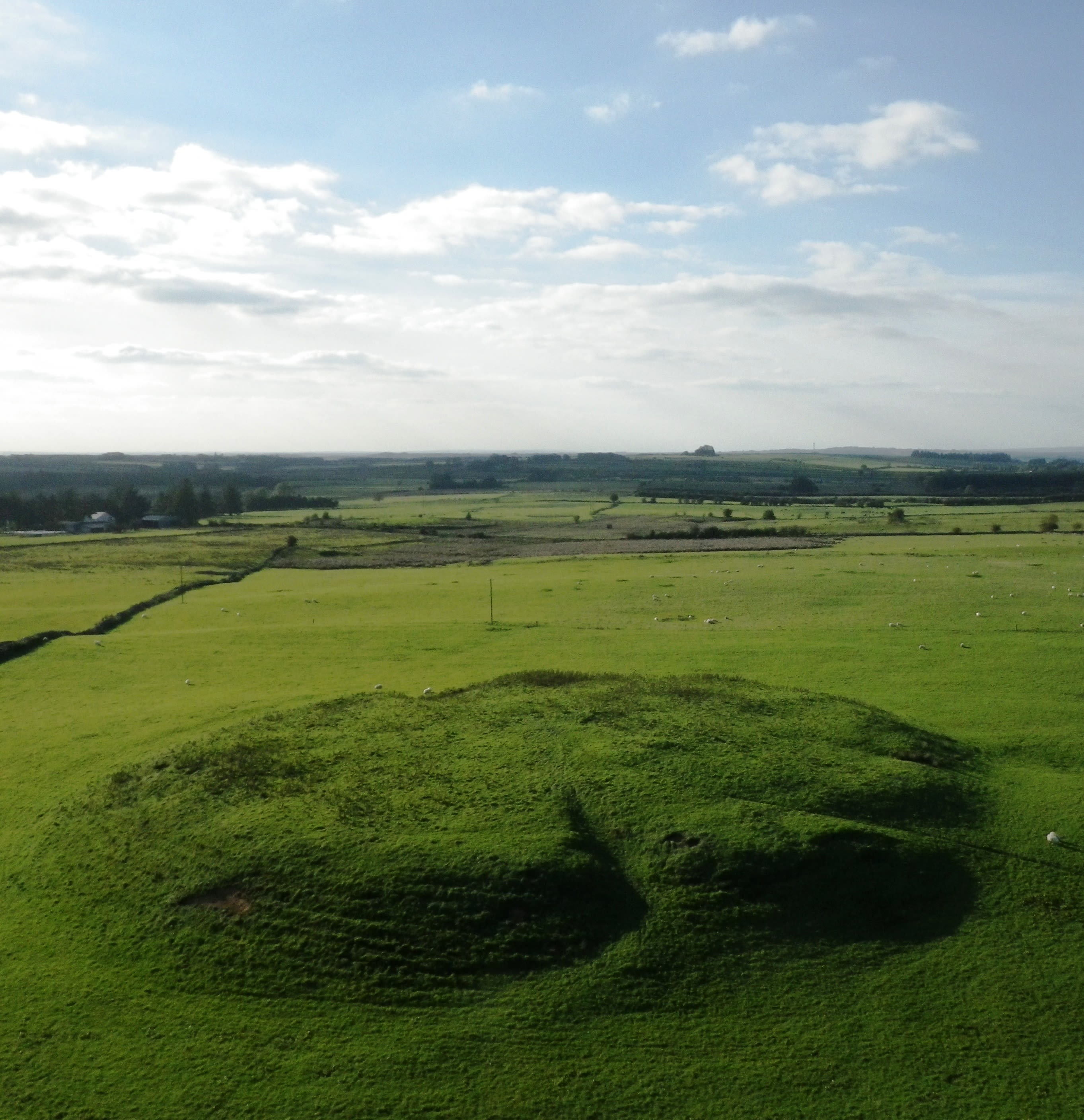
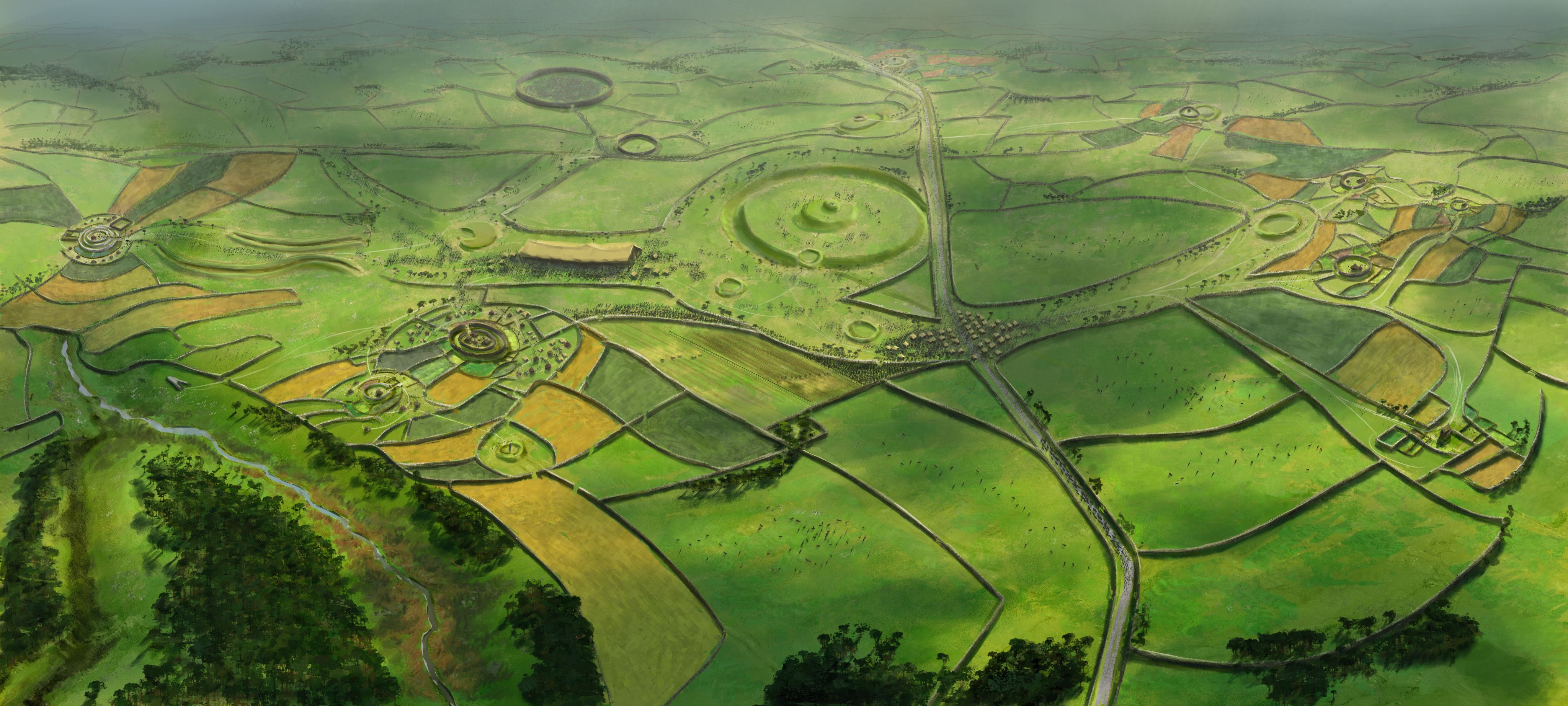
An imaginative rendering of the Rathcroghan ritual landscape as it might have appeared during the Iron Age, about 2000 years ago
Research Funding
This research was support by co-funding from the Government of Ireland and the European Union through the EU Just Transition Fund Programme 2021 - 2027
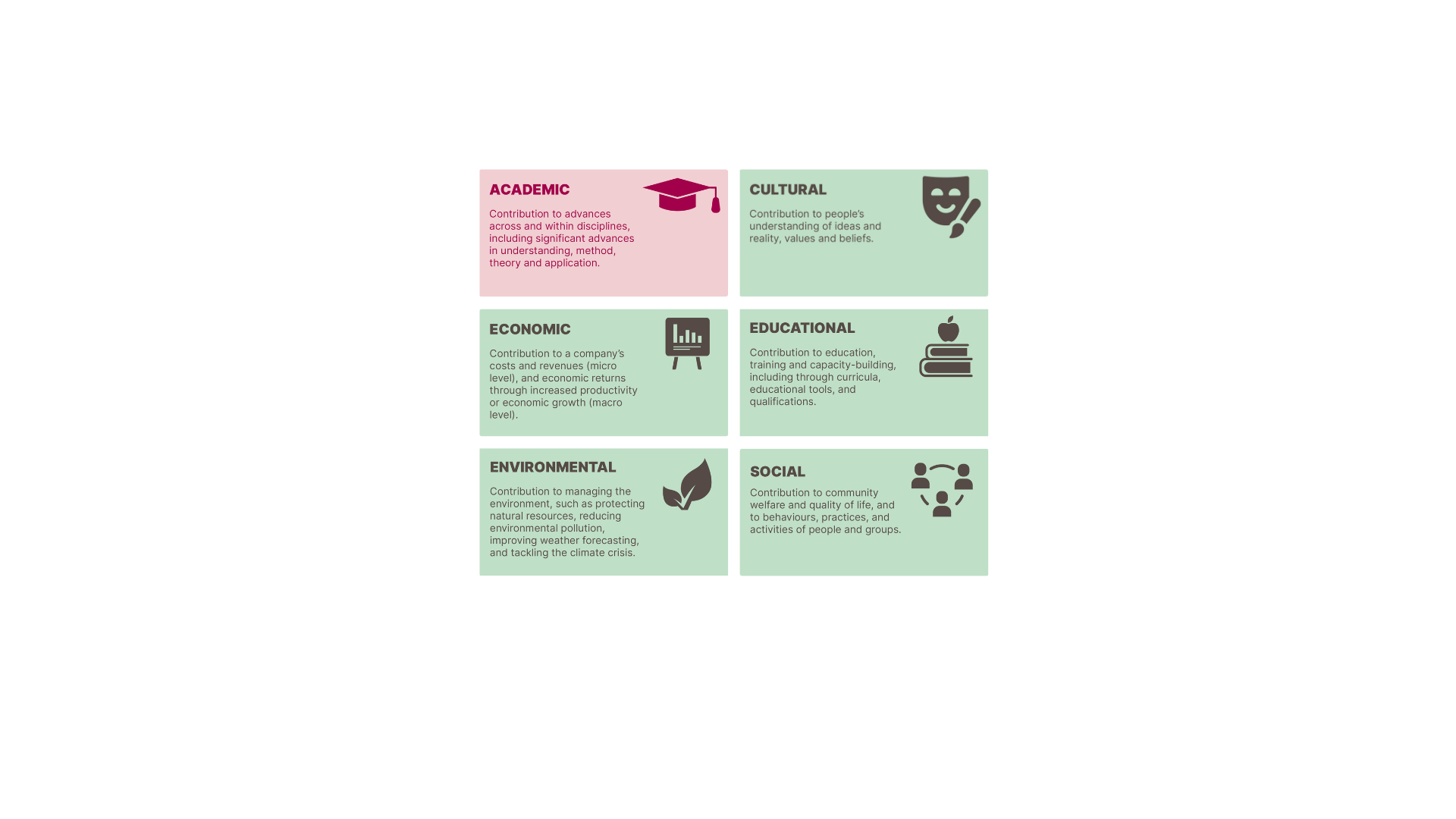
References to the Research
- Farrell, R., K. O’Conor, & M. Potter (eds) 2018. Roscommon History and Society: Interdisciplinary essays on the history of an Irish County. Geography Publications: Dublin.
- Fenwick, J. 2021. Rathra: a royal stronghold of early medieval Connacht. Roscommon County Council: Roscommon.
- Fenwick, J., E. Daly, & S. Rooney 2020. 'Rathcroghan revisited: A renewed archaeological and geophysical exploration of selected areas of the focal ritual complex'. Emania 25, 81-98. Rathcroghan revisited: A renewed archaeological and geophysical exploration of selected areas of the focal ritual complex (nuigalway.ie)
- Gibbons, L. and K. O’Conor (eds) 2015. Charles O’Conor of Ballinagare, 1710-91: Life and Works. Four Courts Press: Dublin.
- O’Conor, K. 2023. Moygara Castle, County Sligo, and the O’Garas of Coolavin. Wordwell: Dublin.
- O'Conor, K. 2021. Settlement in Gaelic Ireland, 1100-1350 (The Farrell Lecture). Eolas: The Journal of The American Society of Irish Medieval Studies,13: 44-72.
- O’Conor, K., P. Naessens, and R. Sherlock 2014. ‘Rindoon Castle, Co. Roscommon: a border castle on the Irish frontier’. Château Gaillard 26, 313-23.
- Schot, R., J. Waddell & J. Fenwick 2016. 'Geophysical Survey at Rathcroghan 2010-2012'. Emania 23, 51-59. Geophysical Survey at Rathcroghan 2010-2012 (nuigalway.ie)
- Waddell, J., J. Fenwick, & K. Barton 2009. Rathcroghan: An archaeological and Geophysical Survey in a Ritual Landscape. Wordwell: Bray. Rathcroghan: Archaeological and Geophysical Survey in a Ritual Landscape: john-waddell-k-j-barton-joe-fenwick: 9781905569311: Amazon.com: Books
- Waddell, J. 2009. Rathcroghan, Co. Roscommon: where the Táin Bó Cúailgne began. Archaeology Ireland Heritage Guide No. 44, Wordwell, Bray. Rathcroghan, Co. Roscommon: where the Táin Bó Cúailnge began (nuigalway.ie)
Evidence of Impact
- Community Outreach/Knowledge Exchange
- Connacht Project, University of Galway: Community Outreach: Sharing Research with Connacht Communities - University of Galway
- Heritage Sites in Roscommon: Heritage sites in Roscommon | Explore Roscommon (visitroscommon.ie)
- Rathcroghan Visitor Centre: https://www.rathcroghan.ie/contact-us/
- Public Policy
- County Roscommon Heritage Plan 2017-2021: Page 1 (roscommoncoco.ie)
- UNESCO World Heritage Sites Tentative List 2022: Home | Royal Sites
- Education
- Discipline of Archaeology, News and Events: News, Events, Social Media & Archaeology Society - University of Galway
- Farming & Environment
- EU Just Transition Fund: https://eufunds.ie/home/our-funds/just-transition-fund/
- European Innovation Partnership (EIP) for Agriculture Productivity and Sustainability
- https://nationalruralnetwork.ie/eip-agri/
- European Innovation Project (EIP): https://www.facebook.com/FarmingRathcroghan/
- European Innovation Project (EIP): https://www.facebook.com/FarmingRathcroghan/
- Farming Rathcroghan: https://farmingrathcroghan.ie/
